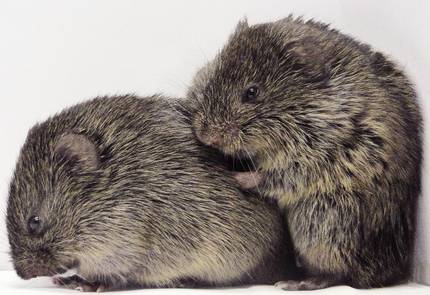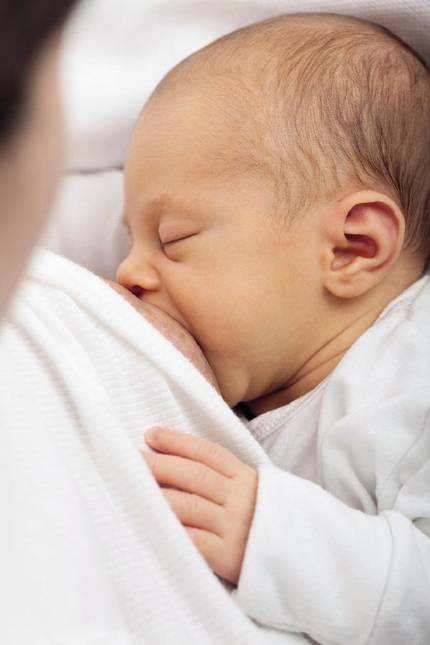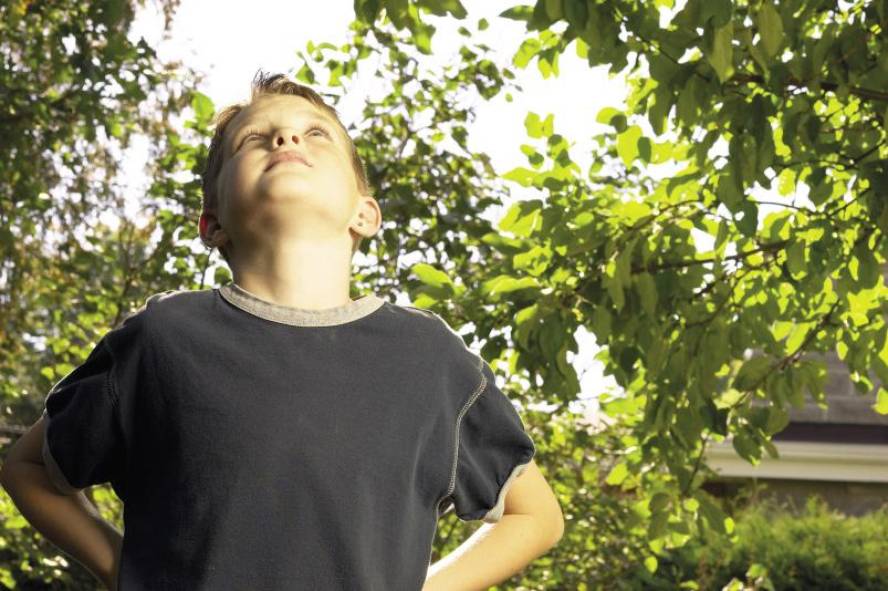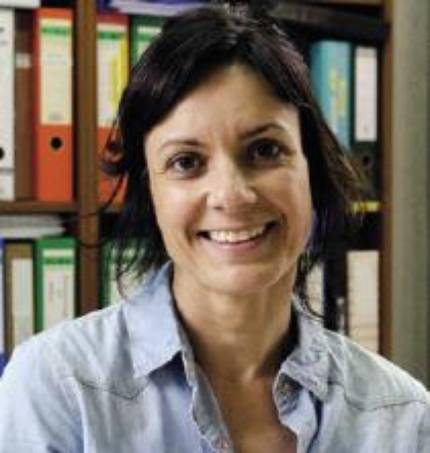Oxytocin: hormone of hope
For marine biologist Ibon Cancio Uriarte, oxytocin is very interesting: “Oxytocin, but also vasopressin, are related to socio-sexual relationships. Both are very similar and occur in the hypothalamus in vertebrates. The hypothalamus, on the other hand, is connected with other components of the central nervous system and the endocrine system through the pituitary. These connections vary widely from one species to another and the neuro-anatomical organization of the nervous system explains, to some extent, that the same molecules have effects so different in one and other species.”
When talking about the influence of oxytocin, it is almost essential to mention the rodent Microtus ochrogaster, which Cancio has also chosen to give the first example. “It is a land, a grass, known for its monogame. In fact, when the union of a male specimen and a female grass occurs, the coating process lasts 24 hours and during all this time the oxytocin and the vasopressin are in a very high concentration. After those 24 hours of intercourse, that couple is tied forever.”
According to Cancio, this is quite rare in mammals: “Only 3-5% of mammals are monogamous, among them we are. Among the grounds, the pasture is also an exception. For example, there is another, that of the mountain, Microtus montanus, just with the opposite behavior: after intercourse, there is no link with the one that has had his partner. But what would happen if we injected oxytocin, it would become monogamous?”, asked Cancio.
The answer is then and no. It also explains why: “The key is not in the levels of oxytocin and vasopressin, but in their receptors and in their neuroanatomical organization. In fact, the pasture plot has many more receptors than the mountain and in more places. Hence the difference in the behaviors of one and the other.”
Both in vertebrates and in invertebrates

In addition to mammals, other vertebrates have oxytocin or similar. That of fish, for example, is called isotope and that of vasopressin, vasotocine. And, as in mammals, they influence sexual and social functions. “In the fish, the females lay their eggs at sea by the action of the vasotocina. And we do the same: we emit sperm, and the contraction necessary for it partly produces oxytocin,” explains Cancio. In the case of bank fish, the responsibility of the vasotocina is to create the sense of the group. In humans, social instinct is partly based on the flow of oxytocin.
On the other hand, Cancio says that in invertebrates there is everything. Normally there is a single gene for the production of oxytocin or vasopressin analogue. For example, these analogues containing cephalopods are very important in the learning process. Therefore, not everything is sex.
But it is also sex, as Cancio has remembered: “We must take into account the great diversity in the reproduction of invertebrates. There are people with asexual reproduction, sexually but hermaphrodite. Among the hermaphrodites there are some that keep a few male specimens. Of course, there are common dioecious species, but there are also dioecious species, in which there are two types of male (androdioic) specimens.”
He adds that all of these different ways of being correspond to different sexual and social behaviors: “For example, in some hermaphroditic species, oxytocin commands who makes sand. In a sort of snail of rivers, like Lymnaea stagnalis, when two individuals are found, oxytocin commands who assumes the role of male, raises the penis, looks for the vagina of the other and there ejaculation”.
However, Cancio warns that there are also invertebrates that have lost the oxytocin or vasotocine gene, such as rotifers. Having an asexual reproduction, they do not need oxytocin or similar, since their socio-sexual needs are simpler, which has led them to lose the gene.

But how to explain why bees are so social the gene of oxytocin analogue? Cancio has acknowledged that it is an unanswered question for the moment. “Ants have and bees are as social as they do. So, how is it possible that bees are not?” It is an unresolved mystery.
Oxytocin in us
Olga Peñagarikano also knows the oxytocin well, but has limited her study to a single species: ours. It says it has been known for a long time, especially related to reproduction: “It is known that he is responsible for the contractions suffered by the baby during childbirth, as well as the rise of milk to the breast during breastfeeding.”
However, in the last ten or twelve years, much interest has been placed in clarifying their brain functions. After his appearance in the pituitary, it has been discovered that he not only flows into the blood, but also in the brain, where he has other functions, rather than related to sex and reproduction, with social behavior. For this reason, nowadays there is much research in the field of alterations of social cognition, which can be suitable for treatment, such as autism and schizophrenia,” explained Peñagarikano.
In fact, Peñagarikano investigates whether he can help in autism. To reach him he has traveled several years: “I studied biology in Leioa and did my thesis in the Genetics Department in relation to fragile X syndrome. This syndrome causes a mental delay very related to autism. Autism, on the other hand, is an agitation of development and, in those who have it, the most remarkable feature is the difficulty in social behavior. Knowing all this closely interested me.”
At the end of his thesis he moved to the United States for a postdoctoral stay, where he has worked for ten years as a researcher. “That experience allowed me to deepen the neurobiological bases of behavior, especially in social behavior,” he said.
Starting from mice
So far he has worked with animals, with mouse models of autism, looking for biological reasons related to behavioral alterations. According to Peñagarikano, “at present, the diagnosis of autism is based on behavior; it is not possible to diagnose it by genetic tests or blood tests. Therefore, it would be helpful to find some biological indicator for diagnosis, for onset and for subsequent treatment.”
He confesses that it was found almost by chance with oxytocin: “With these mice we tested pharmacological treatments that could give good results and then we did behavior tests to see how the tested substances affected them. For example, we tested the well-known Procac, which is actually used primarily to treat depression, but it seems that it can be beneficial in cases like social anxiety. And we also tested oxytocin and vasopressin, among other things.”
Thus they saw that oxytocin gave the best results. What's more, in addition to improving behavior in autism mouse models, normal mice used as control were not perceived. Hence, Peñagarikano concluded that perhaps the greatest benefit would be made to those who presented a lack in the neurotransmission system of oxytocin, and began to deepen its functioning.

Thus, it showed that the mouse model of autism presents levels of oxytocin lower than normal. Therefore, the administration of oxytocin improves social behavior, while those who have a normal level of oxytocin do not have a little oxytocin.
Peñagarikano has made it clear that his mouse model is not the only one that serves to investigate autism. Its origin is in a specific gene related to autism, and others have other genetic variants. However, many have some deficiency in the neurotransmission system of oxytocin.
From mouse to people
Within the autism spectrum there is no single biological reason for all cases. Thus, Peñagarikano believes that over time it will be possible to differentiate subgroups between those who have autism syndrome. “I think one of these groups will be those who have deficiencies in the neurotransmission system and those who, in our opinion, will benefit the treatment of oxytocin.”
It is important, therefore, to identify the people of this subgroup. However, the neurotransmission system of oxytocin is very complex, with the participation of many molecules. Therefore, diagnosis is not easy either. “It can be done based on genes,” says Peñagarikano, “identifying changes in both the genes that encode oxytocin and those that encode the receptor. However, other genetic variants may be involved, for example, in genes with modulating function, etc. On the other hand, the level of oxytocin in blood is also measured, as it may be related to the brain.”

However, when performing clinical trials in people, Peñagarikano has highlighted a good aspect of oxytocin: “For a long time it has been accepted for medical use and is mainly used to provoke childbirth, so we have extensive experience about its safety. It is true, however, that in the deliveries only occurs at that specific time and we do not know if it can have long-term side effects, so we should take it into account.”
But there also has a good side, according to Peñagarikano: “The oxytocin system has a positive feedback, which means that the more it is given the more it generates. Therefore, we must analyze what is the best way to administer it, since it is very likely that once a chronic treatment is started, its daily administration is not necessary. It may be enough once a week to maintain the necessary levels of oxytocin. This kind of research remains to be done.”
Currently Peñagarikano is working with other mouse models to know if others also have that lack in the neurotransmission system of oxytocin. And he has many hopes that he will soon join the patients. In fact, he has started working with the Guipuzcoana Association of Autism, Gautena. “It’s having a very good experience, after all I’ve been researching with mice, and that’s necessary, but the ultimate goal is to help people. So I decided to get in touch with Gautena and they have taken me open arms,” says Peñagarikano.
Thus, they have jointly presented a research project. The idea is for Gautena's children to take samples of DNA through saliva and observe how these altered genes are found in the neurotransmitter system of oxytocin in childhood DNA sequences. The following will be analyzed the possibility of carrying out a clinical trial with children who can respond adequately to the treatment of oxytocin.
“I really want to put into practice the laboratory work and try to help those who have autism,” Peñagarikano said. Before starting, he seems to have a lot of work to get all the permissions and funding, “but it’s worth working hard and trying if oxytocin benefits them.” At least he has serious indications to be hopeful.







